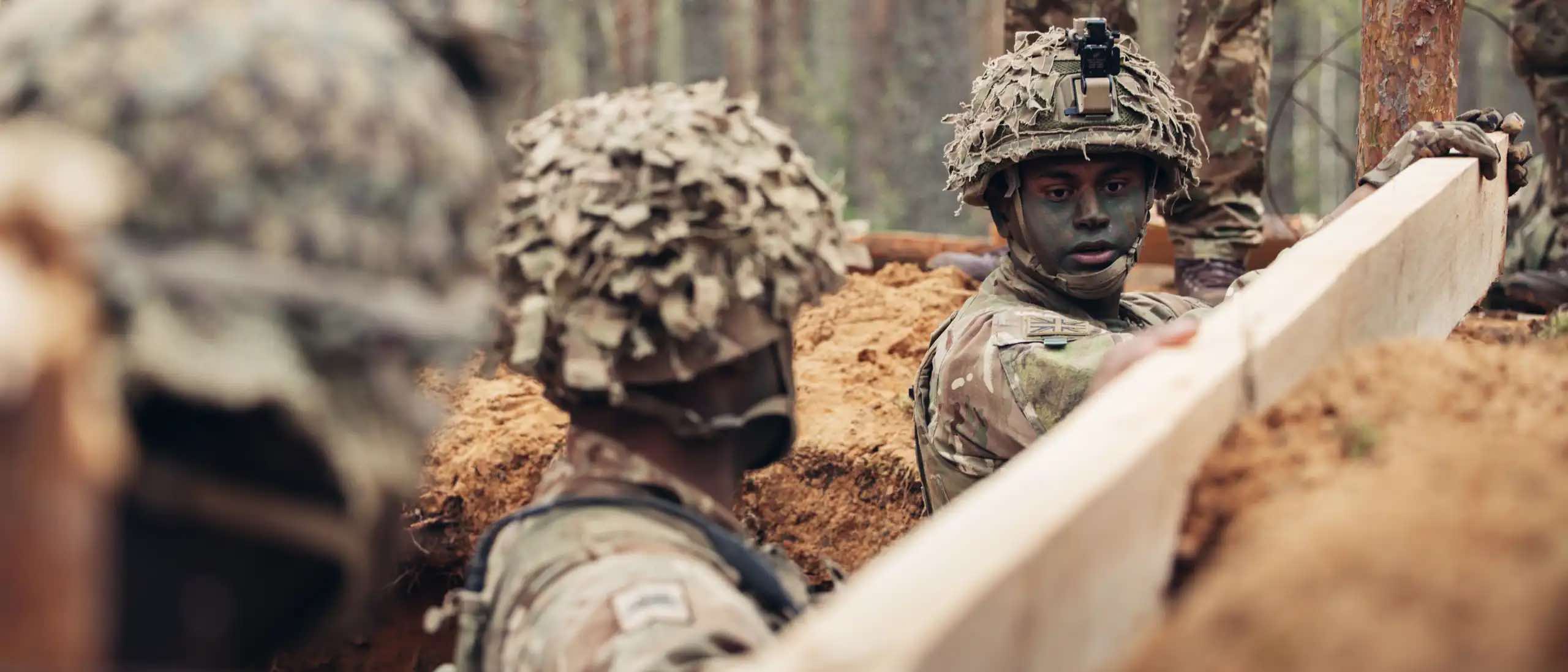


From July 1st, the 1 LANCS has stood at high readiness to deploy under NATO’s Forward Land Forces (FLF) programme — a critical deterrence measure intended to reinforce the alliance’s eastern flank in the event of Russian aggression.
Following a gruelling year of preparation, which culminated in the large-scale Exercise Hedgehog in Estonia this spring, the battalion is now one of NATO’s designated spearhead infantry formations. The exercise, which took place just 35 miles from the Russian border, tested the unit’s ability to fight under battlefield conditions, including trench warfare and rapid tactical deployments.
The King’s Division infantry battalion, known for its tough Northern roots and historic lineage, is now formally integrated into the NATO FLF construct. This means it can be rapidly deployed to bolster defensive lines from the Baltic states to the Black Sea, depending on where the alliance deems the need greatest.
In late June, officers from 1 LANCS visited NATO Supreme Headquarters in Brussels, receiving final operational briefings on their new role. The assignment places them at the heart of the alliance’s land deterrence strategy — part of a broader posture shift initiated after Russia’s full-scale invasion of Ukraine in 2022.
Lieutenant Colonel Bob Carman, Commanding Officer of 1 LANCS, reflected on the scale of the transformation: “As we mark the Battalion’s readiness from 1st July, we reflect with pride on 12 months of dedicated training and force development as part of the Forward Land Forces Brigade,” he said.
“1 LANCS now stands prepared for the challenges ahead, and we look forward to embracing the opportunities to continue training in Estonia, integrating with our Allies, and increasing our lethality with new technical equipment. The battalion will maintain a mindset of continuous improvement — to be more agile, lethal and resilient, and to always be ready.”
The deployment marks a return of sorts to Britain’s Cold War posture, when British forces were permanently stationed in West Germany as a bulwark against Soviet forces. While 1 LANCS remains based at Weeton Barracks near Preston, it now forms a key element in NATO’s graduated readiness force structure, which aims to deploy heavily trained infantry within days of any incursion.
Throughout the past year, the battalion has sharpened its operational edge through a sequence of demanding exercises, including a multi-domain war game on Salisbury Plain earlier this year. The training evaluated the unit’s ability to operate in contested environments — including electronic warfare, drone threats, and long-range artillery.
In addition to its front-line preparations, 1 LANCS has also been called upon to serve domestically. The battalion played a key role in Operation Warm Welcome, supporting the resettlement of Afghan citizens eligible under the UK’s relocation programme. Officers and troops helped coordinate housing, welfare, and language support — a reminder that the British Army’s obligations often span far beyond combat.
And while the eyes of the battalion are now firmly fixed on NATO’s eastern frontier, the past has not been forgotten. In June, 1 LANCS commemorated the 210th anniversary of the Battle of Waterloo, where its regimental forebears played a pivotal role in defeating Napoleon’s army.
The battalion marked the occasion with a solemn ceremony at Lion’s Mound in Belgium, the site of some of the fiercest fighting during the 1815 campaign. The commemorations continued with a parade and families’ day at Weeton, reaffirming the regiment’s connection to its community and its storied history.
The Duke of Lancaster’s Regiment, formed in 2006 through the merger of three historic northern infantry regiments, carries a legacy that stretches back centuries. Known as “The Lions of England”, its soldiers — or Kingsmen, as they are traditionally called — have served in every major campaign from the Napoleonic Wars to Afghanistan.
Now, as Europe faces its most volatile security climate in decades, the regiment once again finds itself at the point of NATO’s spear.
Whether in the forests of Estonia or the training grounds of Salisbury Plain, 1 LANCS is proving that Britain’s infantry still stands ready to meet the challenges of a dangerous new era.
Story/Image: British Army.